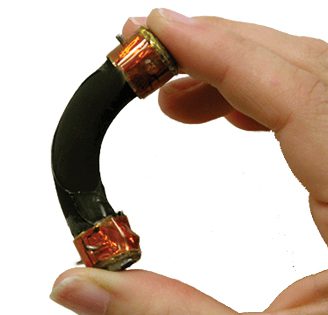
SRI’s electroactive polymer “artificial muscle” (EPAM) technology has the potential to fundamentally shift the way many types of industrial, medical, consumer, automotive, and aerospace products are powered and operated. It offers significant advantages over typical electromagnetic-based technologies: it is much lighter, smaller, quieter, and cheaper. EPAM also offers more controllable and flexible configurations.
The patented, rubbery polymers powerfully contract and expand when subjected to electricity. EPAM enables robots to mimic the dexterity and mobility of humans, and offers performance characteristics similar to those of natural muscle such as high strain, high peak power, and high compliance. In addition to acting as a muscle-like actuator, EPAM can also operate in reverse and generate power from being stretched and contracted.
The technology was featured on the cover of Scientific American in October 2003. SRI spun off Artificial Muscle, Inc. (AMI) in 2004 to further develop the technology and introduce products. In 2010, AMI became a subsidiary of Bayer MaterialScience LLC.
Read our 75th anniversary blog feature
75 Years of Innovation: Artificial Muscle


